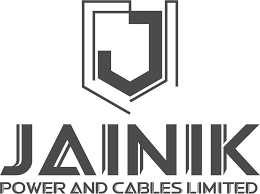
₹ 132000
₹100- ₹110
1200
₹82
-25

12 Jun 2025
16 Jun 2025
17 Jun 2025
Application Details
Jainik Power and Cables IPO is a bookbuilding of ₹51.30 crores. The issue is entirely a fresh issue of 46.63 lakh shares.
Jainik Power and Cables IPO bidding opened for subscription on June 10, 2025 and will close on June 12, 2025. The allotment for the Jainik Power and Cables IPO is expected to be finalized on Friday, June 13, 2025. Jainik Power and Cables IPO will be list on NSE SME with a tentative listing date fixed as Tuesday, June 17, 2025.
Jainik Power and Cables IPO price band is set at ₹100 to ₹110 per share. The minimum lot size for an application is 1200. The minimum amount of investment required by retail investors is ₹1,20,000. But it is suggested to the investor to bid at the cutoff price to avoid the oversubscription senerio, which is about to ₹1,32,000. The minimum lot size investment for HNI is 2 lots (2,400 shares) amounting to ₹2,64,000.
About Jainik Power and Cables Limited (SME IPO)
Jainik Power and Cables Limited, incorporated in May 2011, has over a decade of experience in the metal industry. Initially engaged in the trading of aluminum rods, the company ventured into manufacturing aluminum wire rods in 2023. Its operations are guided by strict Environmental, Health, and Safety (EHS) standards and are backed by multiple ISO certifications.
The company’s manufacturing facility, located in Sonipat, Haryana, is certified with ISO 9001:2015 and ISO 45001:2018 by Innovative Systemcert Pvt. Ltd. (accredited by EGAC and the International Accreditation Forum), as well as ISO 14001:2015 by the United Accreditation Foundation. Jainik Power and Cables maintains a dedicated Quality Assurance Department, which uses spectrometers to conduct purity tests and detect hidden impurities in its products. The company supplies aluminum wire rods across several states, including Delhi, Haryana, Rajasthan, Uttar Pradesh, and Uttarakhand.
FAQ
IPO stands for "Initial Public Offering." It's the process through which a privately-held company becomes publicly traded by offering its shares to the general public and listing them on a stock exchange for trading. This allows the company to raise capital from investors and grants individuals and institutions the opportunity to invest in and own a portion of the company.
The life cycle of an IPO, or Initial Public Offering, begins with a company's decision to go public. It involves hiring underwriters, registering with regulatory authorities, determining the IPO price, marketing to investors, and the subscription period where investors place orders for shares. After allocation and listing, shares become publicly tradable, and the company enters the secondary market. Ongoing reporting and corporate governance are crucial as the company continues to operate as a publicly-traded entity. The IPO aims to raise capital for growth and provides investors with opportunities to trade shares in the company.
An IPO (Initial Public Offering) is when a private company goes public by selling shares to the public. Investors buy these shares, giving them ownership in the company. It's a way for companies to raise capital and expand. The process involves underwriters, regulatory filings, setting the IPO price, and marketing to investors. After the IPO, shares can be traded on a stock exchange. IPOs offer opportunities and risks, so investors should research and consider carefully.
"Upcoming IPOs" refers to initial public offerings that have been announced by private companies but have not yet occurred. These are companies that plan to go public in the near future by issuing shares to the public and listing them on a stock exchange. Investors often keep an eye on upcoming IPOs as they represent opportunities to invest in companies at their early stages of public trading, potentially capturing growth potential. These offerings are typically accompanied by significant media and investor attention as they approach their launch dates.
 Download
Download